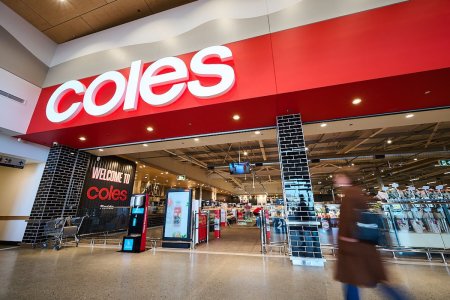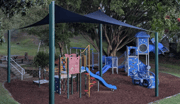Where is your money going? You won't believe how much Coles makes from your shopping!
Lately, surging prices have heightened the stress of grocery shopping for Australians. The situation worsens with rising energy and petrol costs, adding to the burden.
Recognising these challenges, Coles, a prominent Australian supermarket, is actively addressing concerns raised by frustrated shoppers who claim the retail giant is ripping them off.
In a statement, Coles stressed: ‘For every $100 a customer spends, Coles makes $2.60.’
The company asserted that only a small fraction of the money is spent by shoppers in its stores, underscoring that even a supermarket giant with billion-dollar profits is affected by the cost-of-living crisis.
This revelation came as Coles defended itself against accusations of taking advantage of Australians already grappling with various escalating costs, including energy and petrol.
A few months ago, Coles reported record-breaking profits amid the cost-of-living crisis, as detailed in our previous article here.
A Coles spokesperson added in the statement: ‘Coles is also not immune to the increased cost of doing business—construction costs, energy prices, the cost of logistics, and packaging have all risen.’
So, how does Coles manage to make $2.60 for every $100 a shopper spends?
Breaking down the costs of employing over 120,000 Australians, working with ‘more than 8,000 suppliers and farmers’ and ‘investing in value’ for millions of Aussies, could help people understand whether Coles’ statement is true or a ‘rip-off’ as some might say.
Revenue from supermarket and liquor sales was approximately $40.483 billion, with a net profit after tax of $1.042 billion.
Therefore, the figure of $2.60 from Coles’ claim is derived by dividing the net profit after tax ($1.042 billion) by the revenue figure ($40.483 billion), indicating that for every $100 spent by customers in the last financial year, Coles made $2.57 in clear profit.
However, the question remains: where is that money headed?
Coles channels significant financial resources into various facets of its business operations.
During the 2023 financial year, the company allocated over $1.5 billion to lease costs and an additional $1 billion earmarked for supplementary property expenses.
A substantial portion of this financial commitment is dedicated to expansion and renovation, including plans to open 15 new supermarkets, close six, and revitalise 50.
The company also aims to inaugurate 20 new Coles Liquor stores, shutter six, and renew 110.
Coles has invested in heightened security measures for high-risk stores, AI scan technology, upgraded gates, and enhancements to fresh produce specifications to address challenges related to theft and escalating wages.
In terms of workforce expenditures, Coles places a priority on its staff, directing over $5 billion towards wages in the 2023 financial year.
A detailed report on the financial results reveals that Coles dealt with increased costs attributed to higher interest rates, lease renewals, new leases, and borrowing costs.
Moreover, Coles faced challenges from escalating wage costs, increased organised crime and theft, and producing waste due to disruptions in the supply chain.
Despite these issues, the company's net debt, excluding lease liabilities, stood at $521 million.
In response to these challenges, Coles is making significant investments (exceeding $1 billion) to improve its supply chain and make it safer, more efficient, and more sustainable.
In April, Coles marked a milestone by inaugurating an Automated Distribution Centre (ADC) in Redbank, Queensland—the largest single capital investment in the supermarket's 109-year history.
Another ADC is scheduled to open in Kemps Creek, NSW, in 2024. This strategic investment underscores Coles' commitment to adapting and fortifying its supply chain for the future.
Video source: YouTube/WITRON Group
In the last financial year, additional costs to the business included spending $105 million on two automated milk-processing facilities from Saputo Dairy Australia to enhance the security of milk supply.
Simultaneously, Coles reported an investment in enhancing the shopping experience through its Smarter Selling program between 2019 and 2023.
This initiative resulted in $1 billion in savings, which were ‘reinvested into the business and used to help offset inflation’.
The program involved adding trolley-assisted checkouts to 167 more stores, improving Coles Online delivery crates, and introducing compact floor-scrubber machines to minimise manual tasks in delis, seafood, bakeries, and produce areas.

Members, we want to hear your thoughts on this story. Do you believe Coles is providing fair value or not? Share your comments below!
Recognising these challenges, Coles, a prominent Australian supermarket, is actively addressing concerns raised by frustrated shoppers who claim the retail giant is ripping them off.
In a statement, Coles stressed: ‘For every $100 a customer spends, Coles makes $2.60.’
The company asserted that only a small fraction of the money is spent by shoppers in its stores, underscoring that even a supermarket giant with billion-dollar profits is affected by the cost-of-living crisis.
This revelation came as Coles defended itself against accusations of taking advantage of Australians already grappling with various escalating costs, including energy and petrol.
A few months ago, Coles reported record-breaking profits amid the cost-of-living crisis, as detailed in our previous article here.
A Coles spokesperson added in the statement: ‘Coles is also not immune to the increased cost of doing business—construction costs, energy prices, the cost of logistics, and packaging have all risen.’
So, how does Coles manage to make $2.60 for every $100 a shopper spends?
Breaking down the costs of employing over 120,000 Australians, working with ‘more than 8,000 suppliers and farmers’ and ‘investing in value’ for millions of Aussies, could help people understand whether Coles’ statement is true or a ‘rip-off’ as some might say.
Revenue from supermarket and liquor sales was approximately $40.483 billion, with a net profit after tax of $1.042 billion.
Therefore, the figure of $2.60 from Coles’ claim is derived by dividing the net profit after tax ($1.042 billion) by the revenue figure ($40.483 billion), indicating that for every $100 spent by customers in the last financial year, Coles made $2.57 in clear profit.
However, the question remains: where is that money headed?
Coles channels significant financial resources into various facets of its business operations.
During the 2023 financial year, the company allocated over $1.5 billion to lease costs and an additional $1 billion earmarked for supplementary property expenses.
A substantial portion of this financial commitment is dedicated to expansion and renovation, including plans to open 15 new supermarkets, close six, and revitalise 50.
The company also aims to inaugurate 20 new Coles Liquor stores, shutter six, and renew 110.
Coles has invested in heightened security measures for high-risk stores, AI scan technology, upgraded gates, and enhancements to fresh produce specifications to address challenges related to theft and escalating wages.
In terms of workforce expenditures, Coles places a priority on its staff, directing over $5 billion towards wages in the 2023 financial year.
A detailed report on the financial results reveals that Coles dealt with increased costs attributed to higher interest rates, lease renewals, new leases, and borrowing costs.
Moreover, Coles faced challenges from escalating wage costs, increased organised crime and theft, and producing waste due to disruptions in the supply chain.
Despite these issues, the company's net debt, excluding lease liabilities, stood at $521 million.
In response to these challenges, Coles is making significant investments (exceeding $1 billion) to improve its supply chain and make it safer, more efficient, and more sustainable.
In April, Coles marked a milestone by inaugurating an Automated Distribution Centre (ADC) in Redbank, Queensland—the largest single capital investment in the supermarket's 109-year history.
Another ADC is scheduled to open in Kemps Creek, NSW, in 2024. This strategic investment underscores Coles' commitment to adapting and fortifying its supply chain for the future.
Video source: YouTube/WITRON Group
In the last financial year, additional costs to the business included spending $105 million on two automated milk-processing facilities from Saputo Dairy Australia to enhance the security of milk supply.
Simultaneously, Coles reported an investment in enhancing the shopping experience through its Smarter Selling program between 2019 and 2023.
This initiative resulted in $1 billion in savings, which were ‘reinvested into the business and used to help offset inflation’.
The program involved adding trolley-assisted checkouts to 167 more stores, improving Coles Online delivery crates, and introducing compact floor-scrubber machines to minimise manual tasks in delis, seafood, bakeries, and produce areas.
Key Takeaways
- Coles supermarket claims it only makes $2.60 for every $100 spent by customers in-store, attributing this to various business costs.
- The total revenue for Coles in the 2023 financial year was $41.471 billion, with a net profit of $1.098 billion.
- Coles has experienced increased costs due to rising wage costs, theft, supply chain disruptions, and the company's ongoing investments.
- The supermarket giant is investing heavily in streamlining its supply chain and improving shopping experiences for its shoppers, with notable steps such as the introduction of automated distribution centres and trolley-assisted checkouts.








